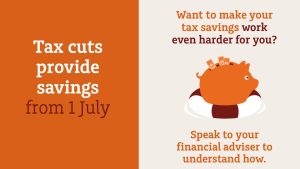Key events in February 2023
- Global Shares slipped in February after January’s strong gains. Concerns about persistent inflation and central bank intentions to raise interest rates were the primary drivers of weaker share prices.
- The US share market fell with inflation concerns reviving. While US consumer annual inflation moderated to 6.4% in January, there were stubborn price pressures in rents and services. US economic activity indicators also recorded surprising strength with robust job gains and strong consumer spending in January.
- European share markets provided a positive surprise despite concerns over the Russia – Ukraine conflict. European shares made solid gains in February with improving business surveys and lower natural gas prices given a mild winter.
- Australian shares also slipped into negative territory in February. The sharpest falls were in the resource sector (-6%) with some disappointment over BHP and Rio Tinto cutting dividends. Financial shares fell (-3.1%) with the banks being squeezed by lower net interest margins and concerns over falling house prices. There were some positives with utilities delivering solid gains (+3.4%). Information technology (+2.7%) also rebounded after a weak performance last year.
- Australia’s economy appears to be softening judging by more subdued retail spending and falling house prices. Consumers became more cautious with the high inflation and rising mortgage interest rates. Even the labour market is cooling after the strong jobs growth in 2022 with the unemployment rate edging up from 3.5% to 3.7% in January. As expected, the Reserve Bank (RBA) increased the interest rate by 0.25% in February, taking the cash interest rate up to 3.35%.
Asset class summary – Asset class returns in Australian dollars – periods to 28 February 2023
CYTD | 1 month | 3 months | 1 year | 3 years pa | 5 years pa | 10 years pa | |
Australian shares | 3.6% | -2.4% | 0.3% | 7.2% | 7.9% | 7.9% | 8.0% |
Global shares (hedged) | 4.1% | -2.0% | -0.9% | -7.7% | 7.7% | 5.7% | 9.2% |
Global shares (unhedged) | 4.7% | 1.5% | -0.7% | -1.3% | 7.2% | 8.9% | 12.5% |
Emerging markets (unhedged) | 1.5% | -2.3% | -1.2% | -8.8% | -0.5% | 1.0% | 5.8% |
Australian property securities | 7.7% | -0.4% | 3.3% | -6.4% | 1.2% | 6.7% | 8.4% |
Global property securities (hedged) | 4.1% | -3.6% | 0.1% | -14.3% | -2.0% | 2.0% | 4.4% |
Global listed infrastructure (hedged) | -2.6% | -4.0% | -5.3% | -3.3% | 2.3% | 5.5% | 7.8% |
Australian bonds | 1.4% | -1.3% | -0.7% | -6.4% | -3.4% | 0.8% | 2.4% |
Global bonds (hedged) | 0.3% | -1.8% | -1.0% | -9.4% | -4.1% | 0.0% | 2.3% |
Global high yield bonds (hedged) | 1.4% | -1.7% | 0.7% | -7.0% | 0.1% | 2.0% | 0.0% |
Australian Inflation-linked bonds | 2.1% | -0.9% | 0.8% | -1.4% | 0.8% | 2.4% | 2.5% |
Cash | 0.5% | 0.2% | 0.8% | 1.8% | 0.7% | 1.1% | 1.7% |
AUD/USD | -0.6% | -4.3% | 0.7% | -7.1% | 1.5% | -2.9% | -4.1% |
Past performance is not a reliable indicator of future performance.
Sources: Australian shares – S&P/ASX 200 Total Return Index; Global shares (hedged) – MSCI All Countries World (A$ hedged, Net); Global shares (unhedged) – MSCI All Countries World in A$ (Net); Emerging markets – MSCI Emerging Markets in A$ (Net); Australian property securities – S&P/ASX 300 A-REIT Accumulation Index; Global property securities – FTSE EPRA/NAREIT Developed (A$ hedged, Net); Global listed infrastructure – FTSE Global Core Infrastructure 50/50 (Hedged $A); Australian bonds – Bloomberg AusBond Composite 0+ Yr Index; Global bonds (A$ hedged) – Barclays Global Aggregate (A$ hedged, Gross); Global high yield bonds (A$ hedged) – Composite of BCGA US Corp HY BB/B (A$ hedged) & S&P LSTA BB/B Leveraged Loan Index; Australian inflation-linked bonds – Bloomberg AusBond Inflation Government 0+ Yr Index; Cash – Bloomberg AusBond Bank Bill Index; AUD/USD – WM/Reuters Daily (4 pm GMT).
Key events in global markets over the last three months to February
While the tragic conflict in Ukraine remains alarming, financial markets are trying to become more resilient to inflation and interest rate risks. Global shares (unhedged) delivered a small negative -0.7% return for the three months to February compared to the turbulence of the same time last year (-5.9%).
Wall Street’s benchmark S&P 500 Index declined by -2.4%, in local currency terms, over the past three months. The US central bank continued to raise interest rates with December’s 0.5% increase followed by a 0.25% rise in February. American inflation is only slowly coming down given persistent price pressures in food prices, rents and wages.
European shares made a strong recovery even with the Russia- Ukraine conflict. The EURO STOXX 50 Index delivered a very strong 6.9% return, in local currency terms, for the past three months given lower energy prices and a mild winter.
Asian share markets also made strong gains. In local currency terms, China (5.5%) and Hong Kong (4.8%) were boosted by hopes that China’s government was ending the ‘Zero COVID’ lockdowns.
Global bonds (hedged) made a negative -1% quarterly return after a tough year. Government bond yields are trying to stabilise with hopes that global inflation pressures are moderating.
Global high yield bonds (hedged) made a solid gain with a 0.7% return. Investors have regained their appetite for yield with optimism that corporate earnings are proving more resilient to inflation and interest rate risks.
Key events in Australia over the last three months to February
Australian shares managed a subdued 0.3% return. Consumer staples (5.2%) lead the market gains given the view consumers have become more cautious about their spending. There were also solid gains for communication services (3.0%) and information technology (2.5%). However, there was weakness in the energy sector (-3.6%) and the resource sector disappointed (-0.2%).
Australia’s economy appears to be slowing judging by weaker retail spending, falling house prices and more sedate results for the labour market. The inflation acceleration is very concerning with sharp rises in energy and food prices pushing annual inflation to 7.8% in December. Accordingly, the RBA has raised the cash interest rate from 0.1% to 3.6% over the year to March 2023. This mix of higher inflation and rising interest rates is starting to weigh heavily on the Australian consumer.
Global prospects
The troubling trio of high inflation, rising interest rates and the war in Ukraine has provided a painful investing climate over the past year. Inflation has risen to multi-decade highs around the world with consumers being squeezed by this higher ‘cost of living’. Central banks have rapidly raised interest rates to cool these inflation pressures.
Investors are very worried about whether central banks can safely navigate the challenge of moderating inflation without severely damaging economic activity. As interest rates sharply rise and financial conditions for borrowers become tougher, investors become naturally concerned that a global recession could occur in 2023.
For investors, assessing these considerable inflation and interest rate risks is very challenging. Given the current investment climate is dynamic with multiple positive and negative scenarios possible, investors should maintain a disciplined and diversified strategy to manage these extraordinary risks.
Important information: This document is issued by IOOF Investment Services Ltd (IISL) ABN 80 007 350 405, AFSL 230703. IISL is a company within Insignia Financial Ltd ABN 49 100 103 722 (formerly known as IOOF Holdings Ltd) and its related bodies corporate. This is factual information only and is based in part on information obtained in good faith from third party sources. The information is current as at 16 February 2023. While this information is believed to be accurate and reliable at the time of publication, to the extent permitted by law, no liability is accepted for any loss or damage as a result of reliance upon it.







